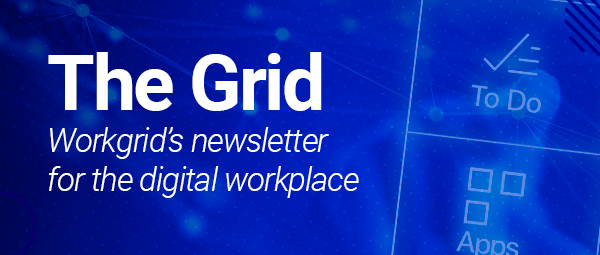Last week a handful of top executives gathered at an executive round table event we held in Boston to talk about best practices for building digital experiences designed to improve the employee experience.
It’s a topic that’s been growing in interest and urgency over the past several years. Based on the animated nature of the round table discussions that took place, it was clear that organizations are investing significant time and resources into figuring out how to create a digital workplace that’s meaningful for employees and gives them more time to focus on high-value work – and that they’d like to start seeing improvements now.
As attendees discussed a variety of employee experience issues, including the barriers they experience in creating and executing a successful experience strategy, areas where the experience needs to be fixed to see improvements in productivity and satisfaction, and organizational paradigms that should be reconsidered to facilitate cross-departmental ownership and collaboration, three key themes emerged that I think are valuable points for any organization to keep in mind when taking on an employee experience transformation.
1. Getting the basics right is critical - and not always easy
As the various groups talked about the struggles they experienced trying to create and execute their employee experience strategies, it was the simple things that seemed to cause the biggest issues. For example, where and how to even start such an initiative was a frequently discussed barrier and understandably so. There’s a flood of information available which makes figuring out what actually matters when creating an employee experience a challenge. How to gain buy in from senior leadership also ranked as a top struggle, as well as the challenge of trying to tackle an company-wide initiative while working in an enterprise that has historically operated in silos.
If you want to make sure that you’ve got a solid foundation in place for your employee experience strategy, here are some resources that will get started on the right foot:
Solving the top 5 causes of friction in the digital workplace
Solution Study: The Intranet & Digital Work Experience of the Future
2. A good employee experience is key to attracting and retaining top talent
There are a number of factors at play that make attracting and retaining top talent a high priority for organizations. For one thing, there are more generations in the workforce than ever before and a large percentage of them are poised to retire in the next few years, leaving a shortage of workers and a dearth of knowledge in their wake. Unemployment rates are also at historic lows, putting job seekers in the driver’s seat when it comes to selecting where they’d like to work.
Those struggles were a big topic of discussion amongst leaders at the event who were acutely aware that the long-term success of their business was closely tied to the personnel they hired. Concepts like improved onboarding and the upskilling of workers were of particular interest as they strategized ways to fill roles with the best people, as well as the relatively new concept of “single threaded owners,” an organizational structure that puts individual employees in charge of entire projects with the power to construct the teams they need for success.
The ultimate key to attracting and retaining the best talent, however, will always come down to creating a seamless, personalized environment that employees actually want to work in. Here are some insights on how to make that happen:
3. To achieve an effective employee experience, focus has to be on employees' needs
It may sound obvious that a good employee experience should focus on employees, yet that’s not how organizations typically design digital experiences. It’s generally a very top down process, with individual groups buying world-class systems in silos with very little thought into how they will play out for the employee experience. The result is a fragmented and frustrating experience for employees that’s miles away from being successful at supporting business goals.
Several areas of focus were discussed by attendees as ways to better meet employee need, including:
Involving employees in the process by asking for feedback on what improvements they would like to see with their experience
Offering self-service technology that empowers employees to find information and complete tasks when and where it’s convenient for them
Providing contextual, personalized communications to prevent employees from being overwhelmed with irrelevant information
As you consider ways to provide greater value to your own employees, these resources might be helpful:
There’s simply no question that improving the employee experience is one of the most important initiatives you could be focused on in the coming year – and Workgrid is here to provide any guidance you need along the way.




